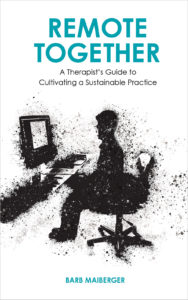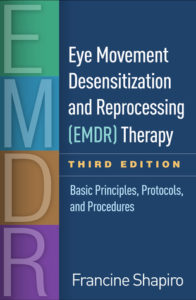We often hear in the news about trauma and PTSD, but very little on Complex PTSD.
So what is Complex PTSD? Here is what Wikipedia defines as Complex PTSD:
“Complex post-traumatic stress disorder (C-PTSD) also known as developmental trauma disorder (DTD) or complex trauma is a psychological injury that results from protracted exposure to prolonged social and/or interpersonal trauma in the context of dependence, captivity or entrapment (a situation lacking a viable escape route for the victim), which results in the lack or loss of control, helplessness, and deformations of identity and sense of self. Examples include people who have experienced chronic maltreatment, neglect or abuse in a care-giving relationship, hostages, prisoners of war, concentration camp survivors, and survivors of some religious cults.”
Think of a child who is dependent on their caretaker to provide safety, nurturing, along with all their basic needs. If a child has been neglected – not attended to, and on top of that abused – the child is in a no win situation. They have to have the adult take care of them, and yet, at the same time, they are being abused. It creates chaos in the child’s sense of self.
Research is showing that children who grow up in these kinds of households, brains actually develop differently. When we are babies our neuronal pathways are growing very rapidly. When we get “good enough” parenting, meaning that the caretakers are attuning to the baby needs emotionally on a consistent basis and providing the essential basic needs, the pathways grow, and as the baby grows up it begins to learn how to regulate emotional states. If the baby is growing up in an environment where the caretaker is emotionally not available, or even being abusive, the neuronal pathways actually shrink or die off. Similar to the phrase “use it or lose it”. When this happens you will see people grow up struggling with relationships, being successful in their jobs, or handling day-to-day stressors.
Through the process of experiencing so much early trauma, the client may dissociate to protect itself from the disturbance. Dissociation is a way to not feel something. It is seen on a continuum, from where you drive your car somewhere and you realize, “how did I get here,” to fully detached state of Dissociative Identity Disorder, a diagnosis in the DSM-5. When something happens to us that overwhelm our system and we can’t process it we dissociate. This is a normal and natural process that occurs to protect us. We dissociate everyday because it’s very difficult to be 100% present all day long.
As children we may not have enough resources to handle certain experiences so the process of dissociation can occur to help us survive. As we grow up into adults, the same process of dissociation can occur because a pattern was set early on and so similar situations that remind us of the original situation trigger our brains to dissociate. As a child that process helped protect us but as adults it may actually get in the way of fully participating in our lives.
Dissociation can look like different things – people space out, want to run away, leave their body and watch themselves, get rageful, etc. It’s important that one becomes familiar with how they dissociate so they can learn to stay present as an adult.
Being a body centered therapist, I have helped people to learn to come into their bodies and stay present through mindfulness exercises meant to build one’s ability to tolerate being the in present moment and experiencing difficult feelings.
The more complex the layering of traumatic events, the more a client needs to learn how to stay present in their bodies. With Complex PTSD, people struggle to stay connected to the present.
They can easily dissociate while trying to think of the traumas they experienced in their childhoods. Learning how to help clients find ways to stay present is essential in the Preparation Phase of EMDR Therapy. It’s helping the client stabilize their emotional states so that they can stay present while reprocessing the old traumatic memories. Clients need to keep one foot in the present (I am in the room with my therapist) while looking at a past traumatic event. This process of dual attention is important to successfully healing a trauma. One needs to hold a witness to the event rather then just relive it and feel completely overwhelmed again.
Traditional EMDR Therapy treatment becomes more complex when working with Complex PTSD. This process of developing skills for the client to stay present in their body and minds is important for therapists to learn. Therapists sometimes have to become more creative in helping their clients develop these skills such as using drawing, music, nature as away into helping the client feel more positive and less distress in their lives. This process of learning to feel something positive can help them stay more present. Eventually as this skill develops, the client will be more prepared to do trauma reprocessing to fully integrate the past so the client can feel more alive in the present.
EMDR Therapist interested in learning the skills necessary to help these types of clients be ready for EMDR Therapy reprocessing, you may want to learn more about our EMDR Advanced Training, “EMDR Therapy Tools for Complex PTSD“
About “EMDR Therapy Tools for Complex PTSD”
Related EMDR Therapy Blog Posts About Complex PTSD
- Books for Working with Complex PTSD and EMDR Therapy
- The Role of Resourcing in Complex PTSD
- EMDR Therapy for Complex PTSD Requires Creativity, Patience, and Finesse
Related EMDR Therapy Books
Maiberger Institute participates in the Amazon Services LLC Associates Program, an affiliate advertising program designed to provide a means for sites to earn commissions by linking to Amazon. This means that whenever you purchase on Amazon from a link on this website, we receive a tiny percentage of its price. Privacy policy.
[Image by 04Mukti via Wikipedia Commons]











What are your thoughts on EMDR and structural dissociation (witch to my understanding is different from “spacing out”)?
I appreciate your comment on the need to be creative when using emdr to treat complex trauma. The work really does require a strong therapeutic rapport. It’s beautiful, powerful work.
Where do I recieve such treatment? I’ve heard of this before, but wasn’t sure where to turn.